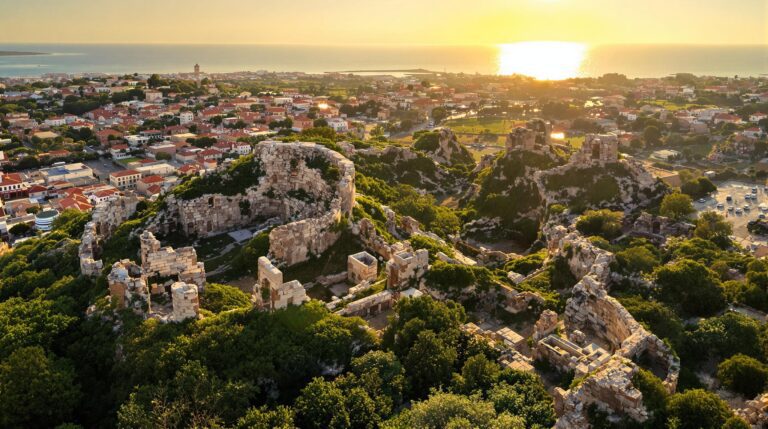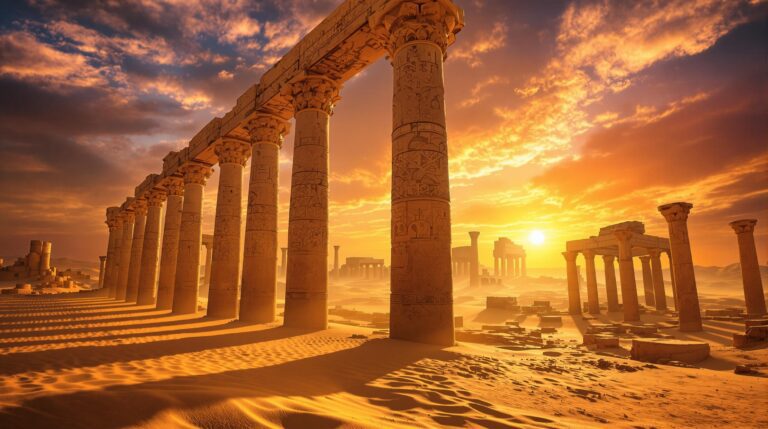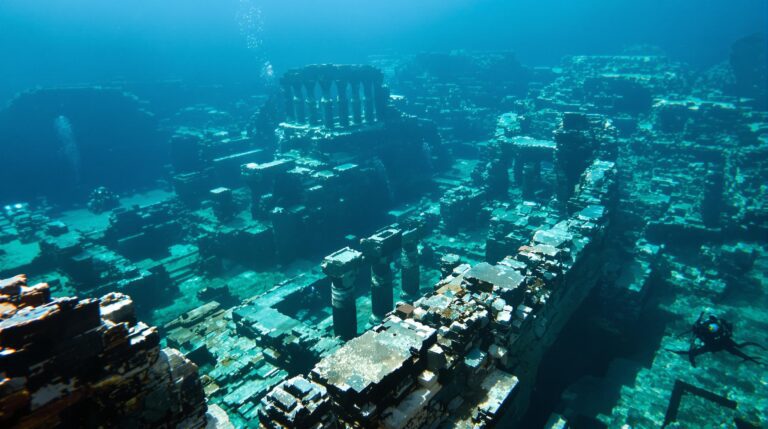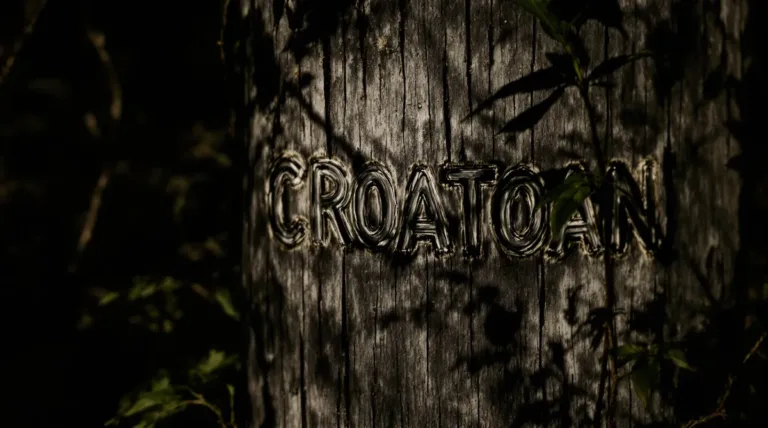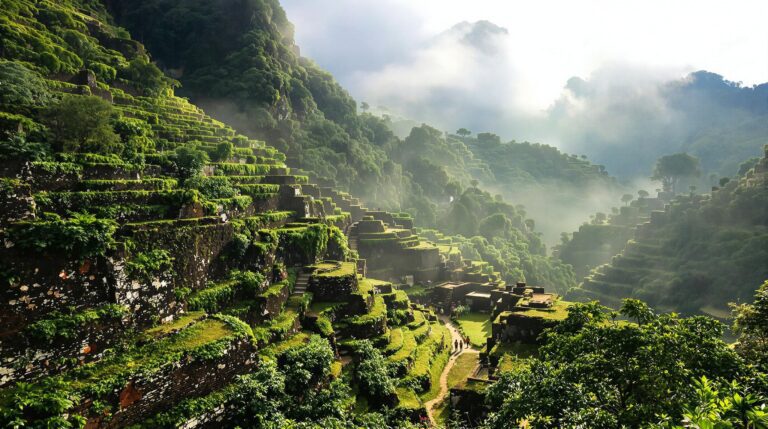Mohenjo-Daro: Traces of a Lost Indus Civilization
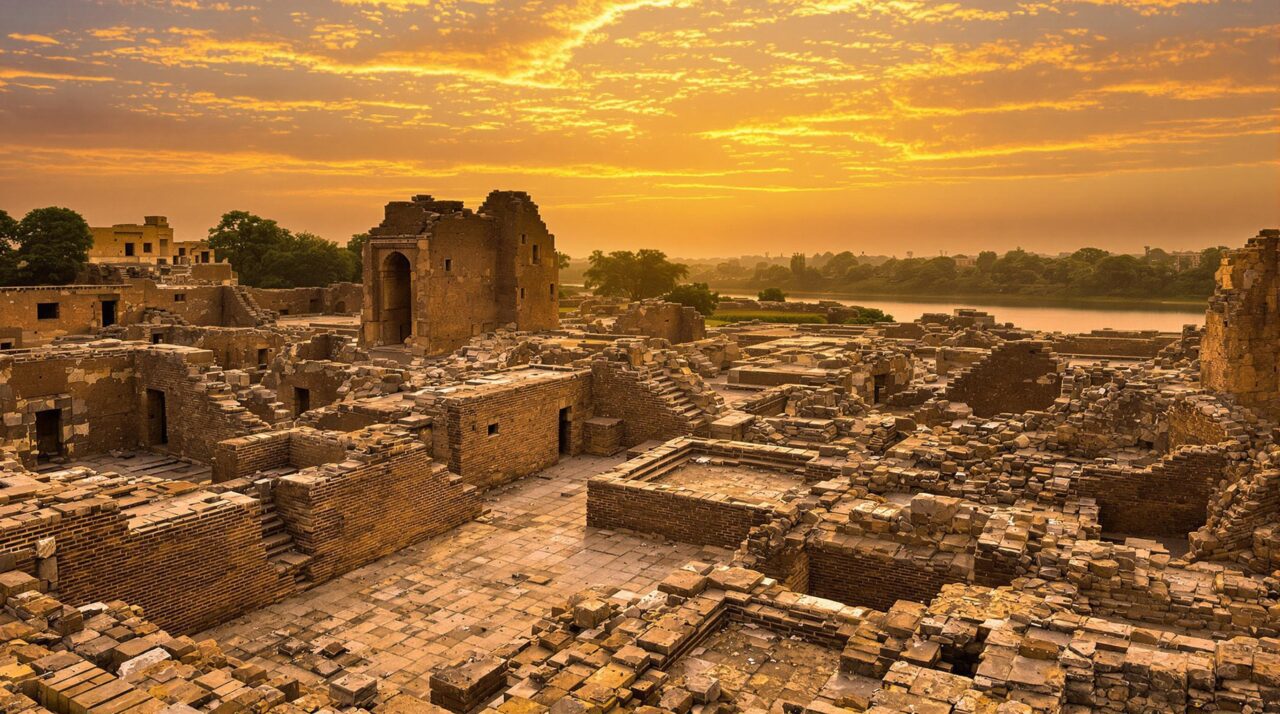
Mohenjo-Daro, an ancient marvel of the Indus Valley civilization, intrigues historians with its abrupt disappearance.
Rediscovered in the 1920s, this well-planned city boasted advanced infrastructure and cultural sophistication.
Yet, its sudden vanishing leaves a trail of questions.
Was it climate change, invasions, or natural calamities that sealed its fate? Despite numerous theories, the truth remains elusive.
This enigma beckons those curious about humanity’s past and the vulnerabilities of ancient societies.
TL;DR
Hide- Mohenjo-Daro's sudden disappearance is attributed to potential climate change or environmental shifts affecting its agrarian base.
- Theories of invasions or internal strife lack evidence due to unscathed structures and minimal weaponry findings.
- Archaeological clues suggest natural disasters, disease outbreaks, or catastrophic flooding may have led to the city's abandonment.
- The absence of mass graves and signs of violence imply a non-violent disappearance, challenging theories of conflict.
- Ongoing scholarly debate highlights the complexity of determining the exact cause of Mohenjo-Daro's sudden vanishing.
The Early Discoveries: Uncovering a Lost City
In the early 1920s, the barren plains of the Indus Valley concealed secrets that would astound archaeologists and historians alike.
When Mohenjo-Daro first emerged from its millennia-long slumber, it challenged existing narratives of ancient civilizations with its sophisticated urban planning and enigmatic script.
The unexpected discovery not only shed light on a forgotten chapter of human history but also raised questions about the fate of its enigmatic inhabitants.
The Moment Mohenjo-Daro Was Brought to Light
The rediscovery of Mohenjo-Daro in the 1920s marked a pivotal moment in archaeology, spearheaded by the dedicated efforts of key figures such as Sir John Marshall and R.D. Banerji.
As their shovels unearthed the remnants of an enigmatic civilization, the significance of the Indus Valley excavations became increasingly apparent, challenging preconceived notions about early urban development.
This momentous breakthrough not only illuminated the sophisticated infrastructure and cultural richness of the Indus Valley but also redefined the understanding of ancient human history.
Key Archaeologists Behind the Breakthrough
Amidst the sands of time, a cadre of pioneering archaeologists played a pivotal role in bringing the forgotten city of Mohenjo-Daro to light.
Sir John Marshall, leading the charge in the 1920s, revealed the city’s complex urban planning. His team, including R.D. Banerji and E.J.H. Mackay, meticulously unearthed clues that defied contemporary understanding, transforming Mohenjo-Daro from obscurity into an archaeological marvel.
Importance of the Indus Valley Excavations
When the veil of dust was lifted from the ruins of Mohenjo-Daro, the world was introduced to a civilization that redefined historical narratives.
This discovery unraveled the complexity of urban planning and advanced societal structures of the ancient Indus Valley, challenging prior assumptions about early human development.
The excavations provided a glimpse into a sophisticated society, inspiring a deeper exploration of humanity’s shared heritage and potential.
The Advanced Urban Design of Mohenjo-Daro
Mohenjo-Daro’s urban landscape was a reflection of the ingenuity of its planners, featuring a grid-like street layout that facilitated efficient movement and organization.
The city’s architecture showcased an advanced understanding of urban planning, with structures built from uniformly sized baked bricks, indicating a standardized approach to construction.
This sophisticated design not only highlights the city’s administrative acumen but also raises questions about the social and political frameworks that supported such planning.
Sophisticated Street Layout and Architecture
Mohenjo-Daro’s urban landscape is a demonstration of ancient ingenuity, showcasing a meticulously planned street grid that accommodated an advanced drainage and water supply system.
This infrastructure not only underscores the city’s sophisticated approach to public health and sanitation but also reflects a broader commitment to thoughtful urban organization, ensuring the harmonious coexistence of its inhabitants.
The remnants of these features invite a reevaluation of early urban planning, positioning Mohenjo-Daro as a pioneer in architectural and civic design.
Notable Features of Drainage and Water Supply
The sophisticated urban design of Mohenjo-Daro is exemplified by its remarkable drainage and water supply systems, which stand as a demonstration of the ingenuity of the ancient Indus Valley civilization.
Intricately planned, these systems featured covered drains lined with bricks, facilitating wastewater management and sanitation.
Public wells guaranteed access to water, reflecting a commitment to health and innovation that resonates with modern ideals of urban living and freedom.
Evidence of Thoughtful Urban Organization
Amidst the ruins of Mohenjo-Daro, the city’s sophisticated urban organization emerges as a demonstration of the advanced planning of the Indus Valley civilization.
Grid-patterned streets, flanked by standardized brick buildings, reveal a methodical layout that speaks to a society valuing order and accessibility.
This meticulous design, coupled with strategic public spaces, underscores a pursuit of harmonious living, echoing a freedom in structured innovation and communal foresight.
Daily Life and Culture in Mohenjo-Daro
In Mohenjo-Daro, the bustling markets and artisanal workshops painted a vivid tableau of a society thriving on trade and skilled craftsmanship, making it a crucial hub in ancient economic networks.
The city’s inhabitants engaged in intricate religious practices, leaving behind artifacts that hint at a complex spiritual life centered around fertility deities and the natural world.
Consequently, the daily rhythms of Mohenjo-Daro were shaped by a blend of economic vibrancy and rich cultural traditions, reflecting a society deeply interconnected with its spiritual and material pursuits.
Trade, Crafts, and Economic Significance
Mohenjo-Daro’s intricate seals, exquisite beads, and diverse pottery pieces offer profound insights into the city’s trade networks and societal organization.
These artifacts suggest a community engaged in extensive commerce, possibly governed by a structured hierarchy that facilitated such economic activities.
Seals, Beads, and Pottery as Clues
Although often overshadowed by the monumental ruins, the small artifacts of Mohenjo-Daro—such as seals, beads, and pottery—offer profound insights into the daily life and culture of its ancient inhabitants.
These artifacts reveal a sophisticated society engaged in extensive trade networks and skilled craftsmanship.
The intricate designs on seals suggest symbolic communication, while beads and pottery indicate daily utility and artistic expression, reflecting their lively cultural identity.
Social Structure and Possible Governance
The enigmatic social structure of Mohenjo-Daro reveals itself through the city’s precise urban planning and architectural sophistication, hinting at an organized governance system.
Streets laid in perfect grids and advanced drainage suggest a centralized authority guiding civic life.
However, the absence of palatial structures or grandiose monuments implies a more egalitarian society, where power was likely wielded through collective consensus rather than autocratic rule, fostering a harmonious community.
Religious Practices and Beliefs
In the heart of Mohenjo-Daro, the Great Bath stands as a symbol of the city’s intricate religious life, suggesting ritualistic purification practices that likely held significant communal importance.
Surrounding this monumental structure, a myriad of sculptures and artifacts unearthed from the site reveals a civilization deeply engaged with symbolic meanings, possibly indicative of deities or spiritual beliefs.
These elements together provide a window into the enigmatic spiritual landscape of Mohenjo-Daro, inviting speculation about the rituals and beliefs that shaped its cultural identity.
The Role of the Great Bath and Ritual Spaces
While many aspects of Mohenjo-Daro remain shrouded in mystery, the Great Bath stands as a tribute to the centrality of ritual and purification in its society.
This architectural marvel, with its sophisticated water management and imposing design, underscores a cultural emphasis on cleansing and spiritual renewal.
Ritual spaces throughout the city further highlight a societal fabric woven with a commitment to communal and individual spiritual practices.
Sculptures, Artifacts, and Symbolic Meanings
Artistry in Mohenjo-Daro offers a window into the spiritual and cultural psyche of this ancient civilization.
Exquisite sculptures and artifacts reveal symbolic meanings, reflecting complex religious beliefs. The iconic “Dancing Girl” statuette, for instance, embodies grace and energy, hinting at societal values.
Intricately carved seals suggest a sophisticated communicative system, possibly linked to trade and ritual, thereby revealing layers of human expression and aspiration through art.
The Sudden Disappearance: Examining the Theories
The enigma of Mohenjo-Daro’s abrupt disappearance has spawned several compelling theories, each offering unique insights into the challenges faced by the ancient city.
Scholars contemplate whether climate change or environmental shifts disrupted the agrarian foundation, while others suggest that invasions or internal strife might have led to societal collapse.
Additionally, the specter of disease outbreaks and natural disasters looms large, proposing a sudden and catastrophic end to this once-thriving urban center.
Climate Change or Environmental Shifts?
The sudden disappearance of Mohenjo-Daro may be intricately linked to climatic and environmental upheavals, with significant evidence pointing towards shifting river courses that disrupted essential water supplies.
Such alterations potentially led to severe resource challenges, exacerbating the strain on agricultural productivity and contributing to soil degradation.
This chain of environmental stressors could have sparked famines, forcing inhabitants to abandon the once-thriving city in search of more hospitable lands.
River Course Changes and Resource Challenges
Amid the mysteries surrounding the sudden disappearance of Mohenjo-Daro, one compelling theory focuses on the dramatic shifts in river courses and the subsequent resource challenges faced by its inhabitants.
The Indus River’s unpredictable path may have severed vital water supplies, leaving the city vulnerable. As access to essential resources dwindled, the inhabitants faced formidable challenges, prompting them to seek new frontiers and reclaim their autonomy.
Soil Degradation and Possible Famines
Many researchers argue that soil degradation played a pivotal role in the decline of Mohenjo-Daro.
As agricultural practices strained the land, fertility diminished, leading to potential food shortages. The balance between human needs and environmental limits was disrupted, possibly sparking famines.
This ecological fragility may have driven inhabitants to seek new beginnings elsewhere, illustrating the delicate relationship between civilization and the Earth’s resources.
Invasions or Internal Conflict?
The enigmatic disappearance of Mohenjo-Daro has led scholars to scrutinize historical narratives that suggest external invasions or internal strife as potential causes.
However, the absence of definitive evidence for large-scale conflict, such as weapons or fortifications, challenges the validity of these theories.
This paradox invites a deeper exploration into the social and political dynamics of the ancient city, questioning whether its decline was marked by violence or a more complex internal transformation.
Examining Various Historical Accounts
While the enigma of Mohenjo-Daro’s sudden disappearance continues to intrigue historians and archaeologists alike, various historical accounts provide a framework through which this mystery can be examined.
Ancient texts and oral traditions suggest upheaval, with theories of invasions or internal conflict surfacing prominently.
These narratives, though varied, hint at a society facing dramatic change, urging modern minds to reassess past civilizations’ susceptibility to collapse and transformation.
Lack of Concrete Evidence for Warfare
Despite the allure of dramatic tales, substantial evidence for warfare leading to Mohenjo-Daro’s disappearance remains elusive.
Archaeological findings lack the telltale signs of conflict. Consider:
- Absence of Mass Graves: No large-scale burial sites indicating battle casualties.
- Minimal Weaponry: Few weapons unearthed, suggesting a peaceful society.
- Unscathed Structures: Buildings show no signs of violent destruction.
These insights challenge warfare theories, inviting deeper exploration.
Disease Outbreaks and Natural Disasters
Amidst the ruins of Mohenjo-Daro, certain archaeological findings suggest the possibility of devastating epidemics or natural disasters contributing to the city’s sudden disappearance.
Scattered human remains and the absence of a clear defensive infrastructure lend credence to theories of disease or environmental catastrophe, yet scholars remain divided on these interpretations.
Such ongoing disagreements highlight the complex interplay of evidence and conjecture that continues to shroud Mohenjo-Daro’s fate in mystery.
Signs Suggesting Epidemics or Catastrophes
In the mysterious narrative of Mohenjo-Daro’s abrupt disappearance, evidence pointing to epidemics or natural catastrophes offers a compelling yet enigmatic perspective.
Archaeological signs include:
- Mass Graveyards: Sudden burials suggest a rapid, widespread demise.
- Abandoned Structures: Homes left intact indicate a hasty evacuation.
- Sediment Layers: Unusual deposits hint at catastrophic flooding.
These elements collectively paint a vivid picture of a civilization abruptly confronting nature’s unforgiving wrath.
Ongoing Disagreements Among Scholars
While scholars continue to explore the mysteries surrounding Mohenjo-Daro’s sudden disappearance, a consensus remains elusive due to conflicting interpretations of the evidence.
Some propose devastating disease outbreaks, citing skeletal remains as potential proof of epidemic-induced flight.
Others argue for natural disasters, such as catastrophic flooding, aligning with regional climatic patterns.
This discord highlights the challenge of reconstructing ancient narratives, inviting curious minds to seek fresh perspectives.
Modern Research and Preservation Efforts
Mohenjo-Daro, an archaeological treasure, faces ongoing threats from environmental degradation and human encroachment, challenging the preservation of its ancient mysteries.
However, advancements in technology offer new hope, as modern tools like ground-penetrating radar and 3D modeling provide insights without disturbing the fragile site.
These innovations not only enhance our understanding of the city’s past but also inform strategies to safeguard its future against the ravages of time and climate.
Threats Facing the Site Today
Mohenjo-Daro, a representation of ancient urban planning, now faces relentless threats from flooding, erosion, and urban encroachment, each posing significant risks to its preservation.
As the Indus River’s unpredictable behavior continues to challenge the site’s stability, modern research and preservation efforts are vital to mitigate these dangers.
Protective measures, including sophisticated drainage systems and controlled tourist access, are being implemented to guarantee that this emblem of human history endures for future generations.
Flooding, Erosion, and Urban Encroachment
Despite its ancient grandeur, Mohenjo-Daro faces significant threats from natural and human-induced forces.
- Flooding: The Indus River’s unpredictable deluges threaten to submerge the ruins, eroding layers of history.
- Erosion: Wind and water gradually strip away the site’s structural integrity, revealing its vulnerability.
- Urban Encroachment: Nearby modern developments encroach upon the archaeological boundaries, compromising preservation efforts and diminishing its historic allure.
These threats imperil its enduring legacy.
Protective Measures Taken at Mohenjo-Daro
In the face of mounting threats, a concerted effort has emerged to safeguard Mohenjo-Daro, underscoring the critical role of modern research and preservation initiatives.
International teams implement innovative techniques to combat erosion and water damage. Protective shelters and drainage systems have been introduced to reduce decay.
Public awareness campaigns foster a global sense of responsibility, empowering individuals worldwide to contribute to the site’s enduring legacy.
Technological Innovations in Archaeology
Modern archaeology employs cutting-edge technology such as remote surveys and digital reconstruction to unveil Mohenjo-Daro’s secrets with unprecedented precision.
These innovations not only provide a meticulous understanding of the ancient urban landscape but also hold the potential to reveal hidden aspects of its societal structure.
The integration of these tools signifies a transformative era in archaeological research, offering promising avenues for future discoveries.
Remote Surveys and Digital Reconstruction
As the relentless march of technology continues to transform various fields, archaeology is no exception, particularly with the advent of remote surveys and digital reconstruction techniques.
These innovations reveal Mohenjo-Daro’s enigmatic past through:
- Drone Imaging: Captures aerial views of the site.
- 3D Modeling: Creates virtual reconstructions of ancient structures.
- Geophysical Surveys: Explores beneath the surface without disturbance.
Such advancements illuminate the city’s hidden depths.
Potential for Future Revelations
While remote surveys and digital reconstruction have greatly broadened the understanding of Mohenjo-Daro’s ancient landscape, the horizon brims with potential for even more groundbreaking discoveries.
Emerging technologies like ground-penetrating radar and advanced imaging promise to reveal hidden structures, offering fresh insights into the city’s enigmatic past.
These innovations empower archaeologists to explore without constraint, unraveling narratives and preserving history with an unprecedented level of detail and precision.
The Enduring Legacy of Mohenjo-Daro
Mohenjo-Daro’s enduring legacy is intricately woven into the fabric of South Asian history, serving as a proof of the region’s early advancements in urban planning and social organization.
Its sophisticated infrastructure, including advanced drainage systems and orderly street layouts, offers valuable lessons on sustainable urban living that resonate even today.
The city’s silent yet profound influence challenges contemporary societies to reflect on the wisdom of ancient civilizations and the timeless relevance of their innovations.
Influence on South Asian History
Mohenjo-Daro, with its advanced urban planning and enigmatic artifacts, offers a compelling glimpse into the cultural continuities that underpin South Asian heritage.
The city’s influence resonates through time, as its sophisticated systems of governance and architecture echo in contemporary practices, sparking a lasting fascination among researchers.
This enduring legacy not only illuminates the complexities of ancient civilizations but also underscores the profound connections that continue to shape the region’s historical narrative.
Cultural Continuities and Lasting Impact
As one explores the intricate landscape of South Asian history, the enduring legacy of Mohenjo-Daro reveals itself through cultural continuities that have persisted across millennia.
- Urban Planning: Sophisticated city layouts echo in modern South Asian architecture, emphasizing grid systems and public utility.
- Artistic Expression: Intricate beadwork and metallurgy reflect in contemporary craftsmanship.
- Water Management: Ingenious drainage systems inspire current sustainable water practices.
This legacy captivates those seeking cultural freedom.
Why the City Still Fascinates Researchers
What compels modern scholars to continually revisit the ancient ruins of Mohenjo-Daro?
Its enigmatic civilization offers profound insights into early urban planning, societal organization, and cultural sophistication.
Researchers are drawn to its unresolved mysteries and the potential to uncover lost knowledge influencing South Asian history.
Mohenjo-Daro embodies an enduring quest for understanding a civilization that thrived with autonomy and enigmatic purpose, enthralling independent minds.
Lessons from an Ancient Urban Marvel
Mohenjo-Daro stands as a demonstration of sophisticated urban planning with its advanced drainage systems and grid-based layout offering valuable insights for modern city planners seeking sustainable solutions.
Its enduring legacy also serves as a poignant reminder of the necessity to protect and preserve world heritage sites, which are irreplaceable links to our shared human history.
As the world grapples with rapid urbanization and cultural erosion, Mohenjo-Daro’s ancient wisdom continues to resonate, urging contemporary society to balance progress with preservation.
Insights for Modern City Planning
Though often overshadowed by the grandeur of other ancient civilizations, the city of Mohenjo-Daro offers profound insights into urban planning that resonate with contemporary challenges.
- Complex drainage systems highlight the need for sustainable water management.
- Grid-like street layouts emphasize the importance of efficient transportation and accessibility.
- Public spaces underscore the value of community-centric design, fostering social interaction and freedom within urban environments.
Calls to Protect World Heritage Sites
As threats from climate change, urbanization, and neglect loom over historical sites worldwide, the urgency to protect World Heritage Sites like Mohenjo-Daro becomes increasingly apparent.
This ancient city’s legacy, a demonstration of human achievement, faces erosion without immediate preservation efforts.
Advocates argue that safeguarding such sites guarantees cultural continuity and the freedom for future generations to explore their past, fostering a deeper connection to humanity’s shared history.
Wrapping Up
Amidst the echoes of bustling streets and the silence of abandoned halls, Mohenjo-Daro stands as a monument to human ingenuity and the fragility of civilizations.
Its meticulous urban planning contrasts starkly with the enigma of its demise, where theories swirl like dust over its sun-baked ruins.
As researchers explore deeper, they unearth not only artifacts but lessons on resilience and impermanence, ensuring that while its people vanished, Mohenjo-Daro’s story continues to captivate and educate.
